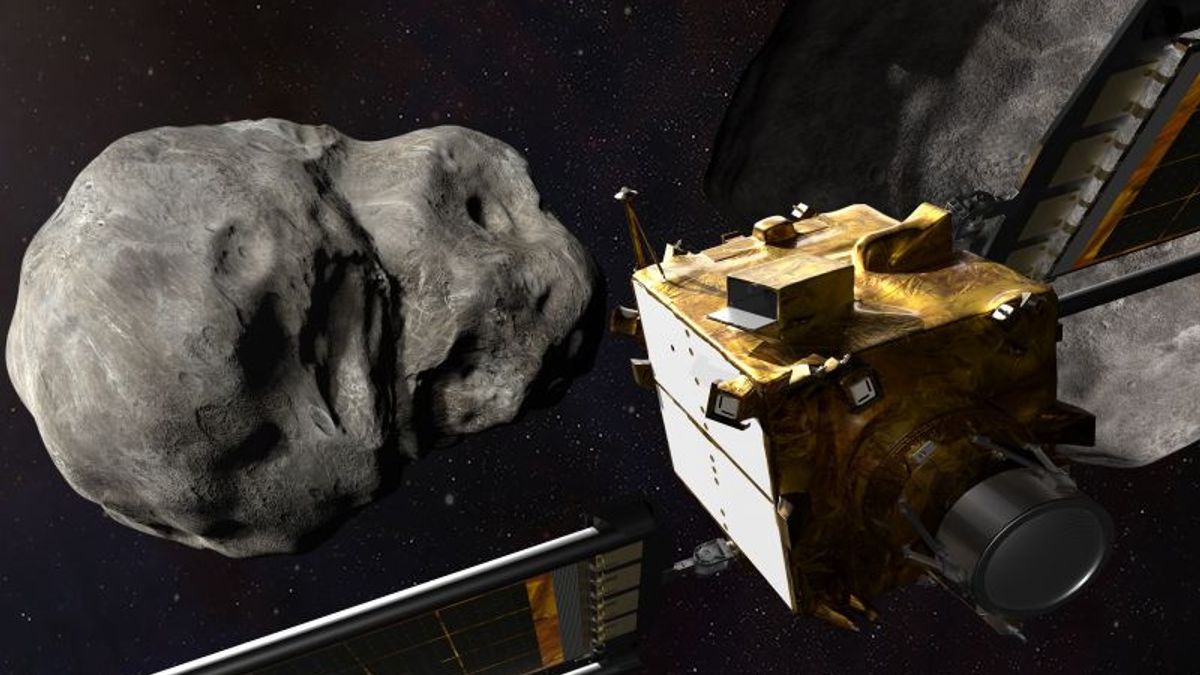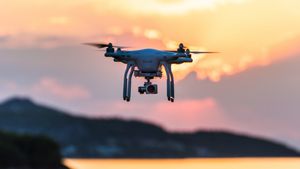JAKARTA – An asteroid the size of the Burj Khalifa building, the tallest man-made building in the world, located in Dubai, UAE, will pass in Earth's orbit. This is thought to have happened in mid-December, as noted by NASA's asteroid tracker.
Referred to as 163899 (2003 SD220), this massive asteroid has a diameter of about 791 meters, nearly half a mile in length.
However, observations made in 2015 by the Arecibo Observatory in Puerto Rico showed that it could be much larger, at least 2 kilometers in length, with observers comparing its shape to that of a sweet potato.
NASA then came up with different measurements, about 1.6 kilometers away, and compared its shape to that of a hippopotamus. However, current NASA estimates put the asteroid at 791 meters in diameter, citing the Jerusalem Post, Monday, November 15.
The asteroid will fly past Earth on December 17 within about 5.4 million kilometers from the planet at a speed of 5.6 km/s.
In comparison, the distance between the Earth and the Moon is only about 385,000 km. Thus, although it is classified as a Potentially Hazardous Asteroid (PHA) due to its size and proximity to Earth, it does not appear to pose a threat to the planet. In fact, NASA has declared Earth safe from asteroid impacts for the next 100 years.
This asteroid belongs to the Aten class, meaning that its orbit crosses the Earth's orbit around the Sun, but spends most of its time in it.
There's a theoretical possibility it could someday strike the planet, but current calculations suggest that's not a problem. However, there is another value in this asteroid, as it has the potential to be the location of robotic exploration missions.
Currently, no such mission is planned, but it is theoretically possible. NASA's Jet Propulsion Laboratory computes data for a hypothetical exploratory mission to an asteroid.
According to this calculation, it will have a delta-v (a measure of various values and a factor that determines how difficult it is to maneuver properly when a spacecraft takes off and/or lands) of 9.851 km/s. For comparison, that number is around delta-v for launching a rocket into low orbit.
Asteroid exploration is a major field in astronomy, and many space agencies have expressed interest in exploring the many large objects in the solar system.
In October, the United Arab Emirates announced plans for a new mission to explore asteroids, and will become the first Arab country to successfully land a spacecraft on an asteroid.
SEE ALSO:
It is planned to launch in 2028 with a development time of seven years for the spacecraft, the mission will see the UAE explore the planet Venus, as well as seven asteroids, culminating in a planned landing on the asteroid itself in 2033 after five years of missionary journeys.
Three countries have landed on asteroids in the past, and many see them as a possible source for future mining operations, as these asteroids can be rich in raw materials.
Despite its potential, many are also genuinely concerned about the dangers of near-Earth asteroids, as their impacts can be devastating and humanity currently does not have adequate means to defend against them.
One method for possibly stopping an asteroid impact is through the use of deflection, which means launching something to slightly change its path.
In layman's terms, that means punching an asteroid with a rocket with enough speed to change its course by a fraction of a second.
The English, Chinese, Japanese, Arabic, and French versions are automatically generated by the AI. So there may still be inaccuracies in translating, please always see Indonesian as our main language. (system supported by DigitalSiber.id)


















